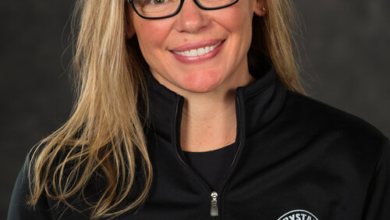What is a calorie deficit? And how many calories do you need per day.

It’s drilled into our brains that the average diet should be around 2,000 calories per day. It seemed simple enough, right?
However, each body is a little bit different. If you’re taller or have a lot of muscle mass, you may require more than 2,000 calories per day, or if you’re a little bit smaller, you may require less.
Additionally, if you exercise a lot, you are going to require more calories than if you have a more sedentary lifestyle.
If the goal is weight loss, you may have been told that you need to be in a calorie deficit, which, put in simple terms, is when you consume fewer calories than what your body needs to carry out its functions. This is true – if you are seeking weight loss, you are going to want to take in fewer calories so the body uses its own body fat to carry out its needs.
But a healthy diet is more than just calories-in-calories-out. We explain everything you need to know about a healthy weight-loss diet.
How do you know if you are in a calorie deficit?
As mentioned above, the recommended 2,000-calorie diet is just an average estimate and isn’t personalized to body size or activity level. Some nutritionists like to use the Mifflin-St. Jeor Equation to determine the calorie deficit that works best for the individual person. This equation takes into account gender, weight, height, age and activity level to determine one’s resting metabolic rate.
You can check out this calculator to determine your resting metabolic rate, and what calorie deficit may work for you.
What you need to know about calories
A calorie deficit does not automatically mean it’s healthy. You could eat 1,500 calories worth of brownies – and you may even lose weight. But you may not get the essential nutrients needed for the health of your cells.
Dr. Julie Chen, an internal medicine physician with Kaiser Permanente in Gaithersburg, Maryland, says, to safely lose weight, it’s most important to make smart food choices.
Here are her tips:
- Include a variety of whole grains, vegetables, fruits and dried beans for essential nutrients and fiber.
- Limit high-calorie, low nutrient value options like sweets, energy drinks and soda.
- Choose water instead – try flavoring it with fruit or mint for a refreshing drink.
- Reduce fats, especially in processed foods and snacks.
- Use less butter, margarine, salad dressing and mayonnaise.
- Enhance flavors with fresh garlic, pepper, lemon or herbs.
- Choose lean or low-fat meats and dairy products.
- Watch out for fat-free treats with high sugar and calorie content. Practice moderation.”
What about dieting?
Dr. Blanca Lizaola-Mayo, MD, a transplant hepatologist (liver doctor) and the Medical Director of the Liver Transplant Center at the Mayo Clinic in Arizona is an expert on nonalcoholic fatty liver disease (NAFLD) and nonalcoholic steatohepatitis (NASH). The first line of treatment against these diseases is lifestyle modifications like diet and exercise.




